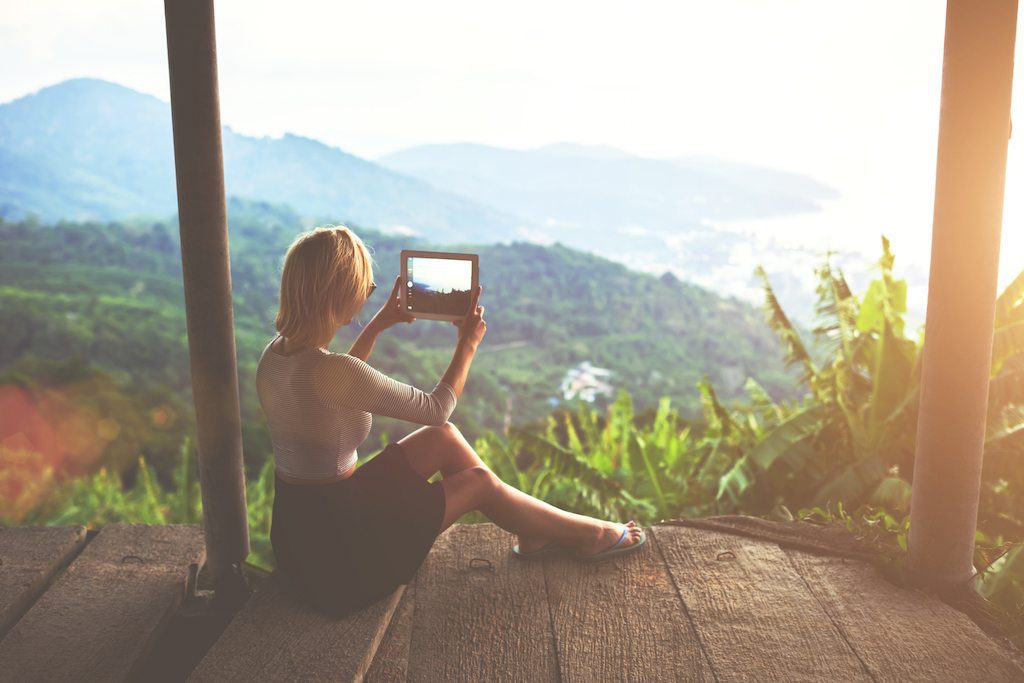Skift Take
It’s no secret that more accessible technology has changed the way travelers research, shop for and purchase travel. Expedia Media Solutions looked at three examples of how digital is changing traveler behavior and why this matters.
This sponsored content was created in collaboration with a Skift partner.
Regardless of current events, world politics or global issues, people continue to travel. They still want to explore new places, visit friends and family near and far, and immerse themselves in other cultures around the world—and we don’t expect this slow down anytime soon.
In fact, a new study from Expedia Media Solutions that surveyed travelers from eight countries found that not only are people still traveling, but they’re traveling a lot. On average, people are taking nearly four trips a year that span an average of eight days in duration, and nearly half are traveling outside of their respective countries.
What’s making it even easier for people to continue to travel is the rapid adoption and widespread usage of digital, as well as continued innovation. Digital is inspiring travelers by making places far and wide seem closer and more accessible. It’s helping people discover new experiences, and making booking a trip quicker and easier than ever before.
Here are three key examples of how digital is influencing the way travelers plan and purchase today.
Digital Inspires Exploration
Imagery can be a powerful tool for influencing a traveler, whether through social media or print—and when imagery is coupled with technology innovation, you’re hitting a sweet spot, especially in travel. Expedia Media Solutions recently partnered with Hawai’i Tourism Authority (HTA) to show how a video experience combined with personalized recommendations can inspire travelers to consider and book Hawaii as their next vacation destination. Viewers were shown drone footage of striking scenery of the Hawaiian Islands, while facial recognition technology was used to identify the most emotional responses from a viewer based on the scenes that evoked the most positive expressions. The viewer was then recommended their ideal Hawaiian vacation based on the imagery that drove their most emotional responses.
Digital Makes Planning Travel More Accessible
Virtual reality and first-person-style video are examples of how technology allows travelers to literally try before they buy. Some might think that virtual reality experiences could replace a person’s desire to travel, since they can experience it from the comfort of their own home, but this isn’t necessarily the case. Digital can potentially ease a person’s fear of the unknown, change their perception of a destination, and entice them to experience the real thing. Expedia Media Solutions’ campaign with The Gold Coast Tourism Corporation brought the popular Australian destination to life and showcased the variety of unique cultural activities within the region. By leveraging first-person video, Expedia Media Solutions created an immersive online experience where users on the microsite are able to experience different activities such as hiking, biking along the beach, as if they’re there in person.
Digital Makes the Research and Inspiration Phases Easier
comScore data shows that users spend an average of 69 percent of their media time on smartphones. As people become more mobile, dreaming about and planning travel can happen anytime, anywhere, whether one is browsing a social media feed or comparing prices of potential flights through an online booking engine. The rise in mobile usage means that researching, planning and booking a trip is literally accessible at one’s fingertips. The millennial generation has already shaken up the travel industry, largely due to how they invest in and interact with mobile—it’s ubiquitous in nearly every aspect of their lives. And while millennials have driven the rise in mobile usage, Generation Z is even more disruptive in how they consume media and mobile. Expedia Media Solutions’ research found that on average, Generation Z, or those between 18- and 23-years-old, are four times more likely to use a smartphone for inspiration, research or booking travel than baby boomers, meaning that mobile will soon be even more ubiquitous.
For more insights on how traveler behavior is changing, download the full study here.
This content was created by Expedia Media Solutions and published by Skift’s branded content studio, SkiftX.
Have a confidential tip for Skift? Get in touch
Tags: digital, research, technology

